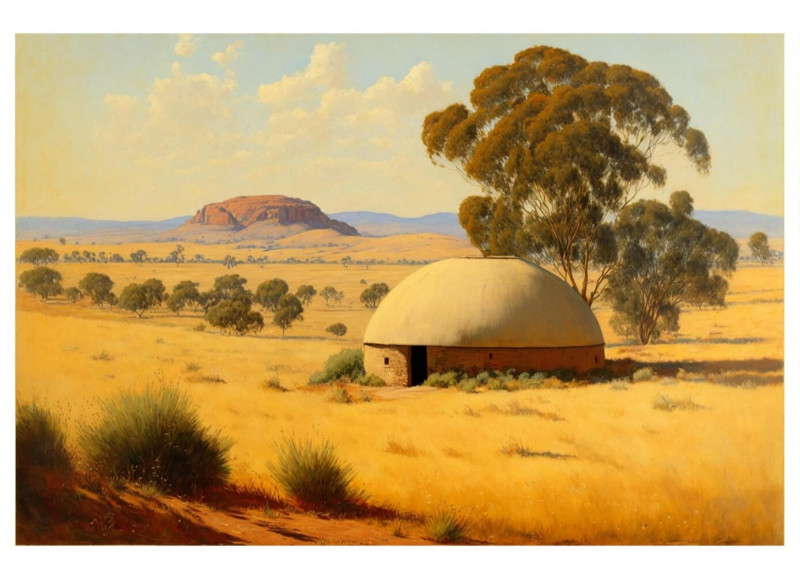5 key facts about this project
The Earth and Sky Temple is an architectural effort that reveals the capabilities of rammed earth as a building material and concept. Located in a landscape that promotes reflection and tranquility, the pavilion serves as a space for contemplation and connection. It invites users to engage both with the interior and the expansive sky overhead. The primary design idea revolves around light and shadow, encapsulated in a dome that enhances the experience of those who enter.
Structural Integrity
The design of the Earth and Sky Temple strategically utilizes the compressive strength of rammed earth. By adopting a funicular dome structure, the design efficiently distributes loads while reducing the amount of exterior wall surface. This approach maximizes interior space unique to rammed earth construction while ensuring structural soundness. The careful management of stresses allows the project to showcase the material's capabilities in an innovative way.
Environmental Integration
A key aspect of the temple is its capacity to adjust to local weather patterns. In times of heavy rain, the pavilion is designed to cope with rising water levels, fostering a relationship between the structure and the surrounding environment. The thoughtful incorporation of this feature allows nature’s elements to play a role in the experience of the space. Rather than standing apart from its surroundings, the pavilion blends with the landscape, presenting an environment where human activity and nature coexist harmoniously.
Light and Spatial Experience
The large oculus situated at the top of the dome is a significant design feature that allows natural light to flood the interior. This flow of light creates a changing atmosphere throughout the day, highlighting the interior’s textures and forms. As visitors move through the pavilion, they encounter a diverse spatial environment that shifts with sunlight, enhancing their connection to the world outside. The design fosters a sense of wonder and invites reflection as day turns to night.
Material Characteristics
Rammed earth forms the core of the Earth and Sky Temple’s structure, offering durability and sustainability. Lime is used to enhance the rammed earth, adding a self-healing property reminiscent of ancient building techniques. This choice reflects a commitment to creating a structure that will last, while also respecting the environment. The materials chosen embody practicality and endurance, serving to strengthen the pavilion’s rapport with its surroundings.
The relationship between the large oculus and the thick rammed earth walls produces an interior environment designed for calmness. Natural air circulation contributes to a comfortable atmosphere, making the temple a space for quiet reflection in harmony with nature.



















































